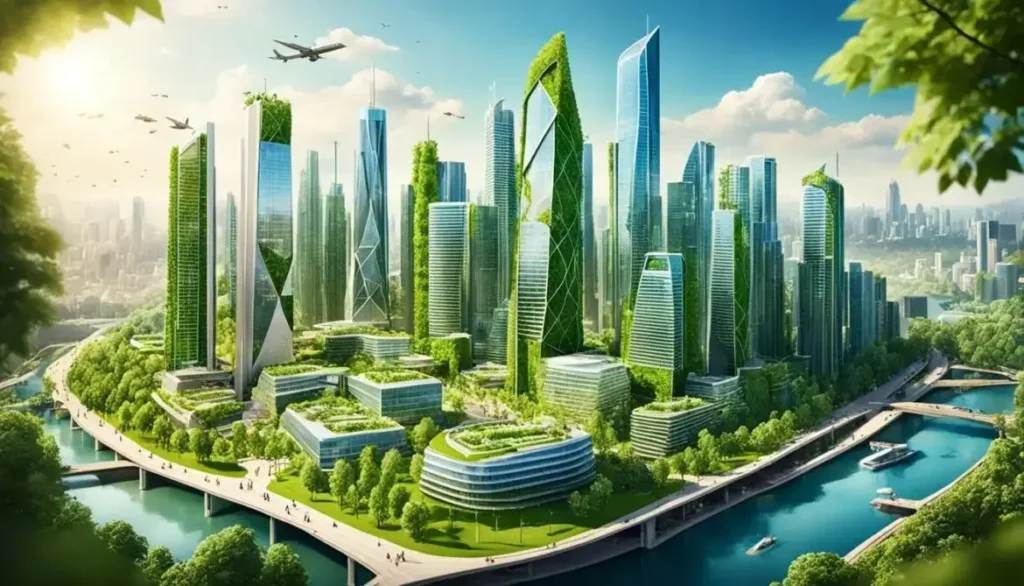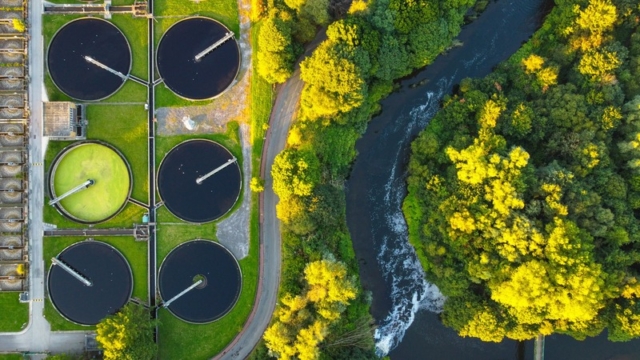Green Workforce: A Crucial Strategy In The Green Economy
Green Workforce: A Crucial Strategy In The Green Economy
Jul 31, 2024
Last updated on Oct 30, 2024
The transition to a green economy presents both a challenge and an opportunity for businesses of all kinds. Embracing this shift not only helps in mitigating environmental impacts but also opens up new avenues for innovation and growth.

The global shift towards a green economy presents a pivotal moment for businesses. It’s a time of both challenge and incredible opportunity. Building a green workforce – a skilled and dedicated team equipped for sustainability – is the key to unlocking these opportunities and achieving a competitive edge.
What is a green economy?
A green economy is an economic model that prioritizes sustainable development and environmental stewardship. It aims to:
- Reduce carbon emissions and environmental damage
- Enhance resource efficiency
- Promote social inclusion and equity
This economic model requires rethinking how we make, use, and distribute goods and services. It covers areas like renewable energy, sustainable farming, green building, and eco-friendly transport.
The green economy isn’t just about environmental protection—it’s about creating a resilient economic system that balances ecological concerns with human well-being and financial stability.
What is a green workforce?
A green workforce consists of individuals employed in jobs that contribute to preserving or restoring environmental quality. These jobs are found in sectors such as renewable energy, energy efficiency, waste management, and sustainable agriculture. A green workforce is crucial for driving the transition to a green economy, as it ensures that businesses have the necessary skills and expertise to implement sustainable practices.
Green jobs are roles that contribute significantly to preserving or restoring environmental quality. Green jobs are not limited to traditional sectors like renewable energy or agriculture. They are increasingly prevalent in official business and service industries, contributing to sustainability and environmental goals.
What business can do to transition towards a green economy
The demand for a workforce equipped with green skills has never been greater. To effectively build a green workforce, organizations must focus on several key areas:
Focus on resource efficiency
Set clear sustainability goals that align with your business objectives. Define specific targets like reducing paper usage by 50% within two years or implementing a fully digital customer service system by 2025. These goals provide direction and help measure progress.
To achieve these goals, ensure top management visibly supports green initiatives. Leaders should actively communicate sustainability’s importance and participate in eco-friendly activities. This includes attending sustainability workshops, endorsing green policies, and practicing environmentally conscious habits.
Building on leadership commitment, involve employees in sustainability efforts. Form green teams to develop and implement eco-friendly practices. Encourage staff to share ideas and join sustainability projects. Organize office-wide recycling programs and energy-saving challenges. Recognize and reward contributions to maintain motivation.
To further embed sustainability into your organization, integrate it into company culture through targeted programs. Offer training on environmental issues and sustainable practices. Conduct workshops on energy efficiency, waste reduction, and sustainable commuting. Provide resources to help employees adopt green habits at work and home.
Complement these programs with incentives to promote behavior change. Reward employees who adopt eco-friendly practices with bonuses for carpooling, using public transport, or biking to work. Offer subsidies for energy-efficient home appliances or extra vacation days for participating in community clean-up events. Share success stories to inspire others.
A prime example of successful implementation is ACB Bank in Vietnam, which has fostered a green culture by setting ambitious sustainability goals and engaging employees at all levels. They have established comprehensive recycling programs, energy-saving initiatives, and green procurement policies. The bank offers incentives for eco-friendly commuting and has created a green team to lead sustainability efforts. Their commitment from top management and active employee participation have positioned them as a leader in sustainable banking.

Building a green workforce with green skills
Organizations that prioritize sustainability are better positioned to thrive in an environmentally conscious market. This shift requires a workforce equipped with the right green skills.
1. Identifying green skills needs
Begin by conducting skills audits and gap analyses to evaluate the existing skills within your organization. This will help identify what competencies are currently available and what is lacking, particularly in relation to the demands of emerging green roles in sectors like renewable energy, sustainable agriculture, and waste management.
According to the World Economic Forum, the demand for green skills has surged, with a 15% increase in job postings requiring these skills from 2022 to 2023.
This data emphasizes the need to prioritize the acquisition of technical skills such as energy auditing, understanding environmental regulations, and mastery of sustainable practices. Alongside technical skills, soft skills like strategic thinking and problem-solving are also essential and align closely with organizational sustainability goals.
2. Developing green skill training programs
Once the skill gaps are identified, develop targeted training programs tailored to these needs. Collaborate with educational institutions and industry experts to ensure the content is both relevant and state-of-the-art.
For example, a renewable energy course could be developed in partnership with a local university’s engineering department. Including certifications like LEED can enhance the credibility of these programs and provide valuable credentials for employees.
3. Upskilling and reskilling existing employees
Encourage cross-training to facilitate employees’ transition into green roles, preparing them for the new challenges within the green economy.
The International Labour Organization highlights that continuous upskilling and reskilling can significantly boost workforce productivity and adaptability.
Promote ongoing education through workshops and online courses on subjects like energy management or sustainable supply chains to keep the workforce updated on the latest sustainable trends and technologies. Establish clear career paths to help transition employees from traditional roles to green jobs.
4. Cultivating green leadership
Develop leaders who can embed sustainability into the core business strategies. This involves fostering a sustainability mindset at all management levels.
Training should include environmental ethics, sustainable business practices, and corporate social responsibility. A Harvard Business Review study found that companies with strong sustainability leadership tend to outperform their peers financially.
Recognize and reward green leadership within the organization with incentives like awards for sustainable projects, which can inspire further commitment to green initiatives.
5. Strategic green talent acquisition
Create detailed job descriptions and competency frameworks that specify the skills and qualifications required for green roles. Use skills-based hiring practices to identify candidates with transferable skills that fit these roles.
Develop targeted recruitment strategies and collaborate with educational and vocational institutions to build a pipeline of talent focused on sustainability.
6. Promoting diversity, equity, and inclusion (DEI) in the green workforce
Make green job opportunities accessible to all demographics by promoting diversity, which brings varied perspectives and fosters innovation.
Implement inclusive hiring practices and develop outreach programs to attract underrepresented groups to green careers. McKinsey & Company reports that companies with diverse workforces are 35% more likely to exceed national industry financial medians.
Enhance support for an inclusive workforce through mentorship programs and diversity training.
Partnerships and advocacy
According to a McKinsey report, collaborative efforts in green technology can lead to substantial cost savings and innovation. The shared investment lowered the financial burden on individual companies and accelerated the transition to renewable energy. By sharing best practices, resources, and innovations, companies can collectively advance their green initiatives.
Government policies play a crucial role in creating a favorable environment for sustainable practices. For instance, the European Union’s Green Deal aims to make Europe climate-neutral by 2050, providing a framework for businesses to align their strategies with sustainability
Apple and Google are now both 100% powered by renewable energy. Their advocacy efforts have led to the implementation of favorable regulations and incentives, making it easier for businesses to invest in green technologies. These companies are setting a benchmark for others to follow.

Resource efficiency & reduce carbon footprint
For many manufacturers, their green workforce primarily focuses on optimizing resource use and minimizing carbon emissions.
Lean manufacturing helps companies reduce waste and work more efficiently. It improves how materials and energy are used, saving money and helping the environment. Toyota is a good example of a company that uses lean manufacturing to cut waste and work better.
In addition to streamlining processes, using energy-saving technology is a smart way to lower costs and help the environment. This can include better lighting, heating and cooling systems, and newer machines.
Smart building systems, like lights that turn off automatically and thermostats that adjust themselves, can save a lot of energy. These systems help track and control energy use in real-time, which can cut energy waste in buildings by a lot.
Improving recycling in a company involves setting up good recycling programs and teaching employees how to recycle properly. Using less paper by working more with computers and digital documents also helps create a more environmentally friendly office.
By focusing on these areas, businesses can not only contribute to a greener future but also benefit from several advantages:
- Cost Savings: Adopting energy-efficient practices can lead to substantial savings. For example, General Electric saved $300 million by implementing energy-efficient.
- Enhanced brand reputation: More people want to buy from companies that care about the environment. A Nielsen study found that 66% of shoppers will pay extra for products from environmentally responsible companies. This means businesses that go green can sell more and keep customers coming back.
- Regulatory compliance: Following environmental rules is smart. It helps companies avoid fines and be seen as leaders. The European Union’s strict environmental laws illustrate the importance of staying ahead of regulatory requirements to ensure long-term success and minimize legal risks
- Attracting talent: According to a Deloitte survey, nearly half of Millennials consider a company’s environmental policies when job hunting. This highlights how robust sustainability practices contribute to building a skilled and motivated workforce, essential for business growth and innovation.
Building a green workforce is not just a trend; it’s a necessity for businesses aiming to thrive in the green economy. However, driving transformation and integrating greener strategies can be challenging. That’s why it’s essential to stay informed and connected with the latest trends and insights.
Join us at THE MAKEOVER 2024 to explore how you can drive transformation and become a leader in green growth. Embrace the challenge of being G-REENER in your strategy and unlock new opportunities for your business. Don’t miss out on this chance to be part of a transformative journey towards a sustainable future.

Solve your HR problems!
6th Floor, Star Building, 33 Mac Dinh Chi, Saigon Ward, Ho Chi Minh city, Vietnam




